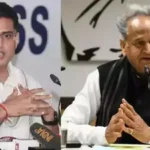In a significant development, the Union Public Service Commission (UPSC) has recently made an announcement regarding the recruitment of candidates for lateral entry positions at the level of joint secretary, director, and deputy secretary. This marks the third tranche of vacancies to be filled through this exercise since its inception in 2019. The move is aimed at bringing in fresh talent from outside the bureaucracy to infuse new perspectives and expertise into the Indian civil services.
The UPSC, known for its role in conducting examinations and recruiting for various prestigious government positions, has opened up this opportunity for lateral entry to enable individuals from diverse backgrounds to contribute to the nation’s governance. The 20 vacancies available for joint secretary, director, and deputy secretary positions indicate the government’s commitment to promoting transparency and efficiency by embracing new talent and fresh ideas.
The lateral entry scheme was launched in 2019 as a means to attract professionals from various sectors such as private industry, academia, and non-governmental organizations. The intention behind this initiative was to tap into the expertise and specialized knowledge that individuals from these sectors possess, which can be leveraged to bring about transformative changes in the functioning of the government machinery.
The scheme not only broadens the talent pool but also offers an opportunity for career professionals who have excelled in their respective domains to serve the nation in key decision-making roles. By allowing lateral entry at senior positions, the government seeks to capitalize on the managerial and technical skills of professionals who may not have taken the traditional route of entering the civil services through the regular examination process.
The vacancies for joint secretary, director, and deputy secretary positions reflect the government’s recognition of the need for diverse skill sets and perspectives in governance. These positions are crucial in shaping policies, implementing reforms, and driving development initiatives across various sectors. By opening up these positions to lateral entrants, the government aims to bridge the gap between policy formulation and its effective implementation, thereby ensuring greater efficiency and efficacy in governance.
The UPSC, being the nodal agency responsible for the selection process, plays a pivotal role in ensuring a fair and transparent recruitment procedure. Candidates applying for these positions will undergo a rigorous selection process, including a written examination and an interview, to assess their suitability for the roles. This ensures that individuals with the necessary knowledge, skills, and experience are selected to fulfill the responsibilities associated with these high-level positions.
The lateral entry scheme has been well-received by both aspirants and experts alike. It provides an opportunity for professionals who have excelled in their respective fields to contribute their expertise to the nation-building process. Moreover, it brings a fresh perspective to the bureaucracy, facilitating the exchange of ideas and best practices between the government and other sectors.
This move by the UPSC and the government to recruit lateral entrants for key positions demonstrates their commitment to modernizing and strengthening the civil services. It acknowledges the importance of adapting to the changing needs of governance and leveraging the skills of professionals from diverse backgrounds.
The announcement of 20 vacancies for lateral entry at the level of joint secretary, director, and deputy secretary by the UPSC is a significant step towards infusing fresh talent and expertise into the Indian civil services. This initiative aims to enhance the effectiveness and efficiency of governance by bringing in professionals from various sectors to contribute their specialized knowledge and skills. It is a positive stride towards creating a more dynamic and responsive bureaucracy that can meet the challenges of a rapidly evolving world.




